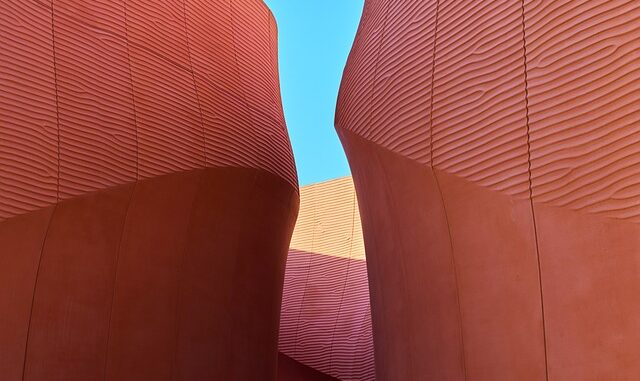
Summary
This article provides a comprehensive guide to successful land development design, covering crucial aspects from initial land assessment to future planning. It emphasizes the importance of understanding the land, prioritizing sustainability, efficient space utilization, community integration, and adhering to safety standards. By following these rules, developers can create thriving and sustainable communities.
Focus360 Energy: property compliance services – pre-planning to post-construction. Learn more.
** Main Story**
Okay, so you’re about to embark on a land development project? Exciting stuff! But before you get too carried away with blueprints and budgets, let’s chat about some guiding principles. Think of these as friendly advice from someone who’s seen a development or two (or, well, more than a few!).
First things first:
1. Know Your Land Inside and Out
Seriously, know it. Don’t just glance at a map and call it a day. We’re talking deep dive here. What’s the lay of the land? What kind of soil are we dealing with? What’s already growing there? Are there any weird environmental gotchas lurking? Ignoring these things is like trying to bake a cake without knowing if you have flour. It just won’t work, and it’ll probably be a mess.
I remember one project where we completely overlooked a protected wetland area. Oops! That little oversight cost us weeks of delays and a boatload of cash. Trust me, spend the money upfront on surveyors, environmental consultants, the works. It’ll save you in the long run.
2. Go Green (Seriously, Go Really Green)
Sustainability isn’t just a buzzword; it’s the future. Think about it: what impact will your development have on the planet? Can you use renewable energy? What about green building materials? Can you find smart ways to conserve water? People are increasingly drawn to eco-conscious communities, and frankly, it’s the right thing to do.
3. Respect Mother Nature (She Bites Back!)
Okay, maybe she doesn’t literally bite, but you get the idea. Try to work with the land, not against it. Preserve those beautiful trees, use natural drainage systems, and minimize disruption to the existing ecosystem. Not only will it look better, but it can also save you money on construction costs. Plus, who doesn’t love a development that feels like it belongs there?
4. Be Smart About Space
Nobody wants to live in a sardine can. Maximize land use, sure, but don’t cram everything in. Leave room for green spaces, parks, and community amenities. Think carefully about building placement, setbacks, and road layouts. I saw one development where the houses were so close together, you could practically borrow sugar from your neighbor without leaving your living room. Not exactly ideal, is it?
5. Listen to the Locals
Your development isn’t happening in a vacuum. What does the local community need? A park? A school? A community center? Talk to people! Get their input! Not only will it make your development more appealing, but it’ll also foster a positive relationship with the surrounding area. No one wants to be the developer who steamrolled over the community’s wishes, and a little bit of respect goes a long way, you know?
6. Make It Pretty (Aesthetics Matter!)
I mean, let’s be honest, looks do matter! Pay attention to the architectural style, landscaping, and streetscapes. You want to create a place that people are proud to call home. An aesthetically pleasing environment increases the value of your development and makes it a more desirable place to live. Plus, a well-designed space just makes you feel good, doesn’t it?
7. Safety First, Always
This one’s non-negotiable. Follow all safety codes and regulations. Design for accessibility. Make sure everyone, regardless of ability, can enjoy your development. That means accessible pathways, ramps, and other features. And if you’re not sure about something, ask! Better safe than sorry.
8. Give the People What They Need
Think about the essentials: schools, hospitals, retail spaces, public transportation. Providing convenient access to these services enhances the quality of life for residents and makes your development way more attractive. The rain lashed against the windows and the wind howled like a banshee, as I sat in a community hall, and listened to people moan about the lack of local services. Don’t be that guy. Be better.
9. Think Ahead (Way Ahead)
What about future expansion? What about changes in the community? Design with the long-term in mind. Incorporate flexible spaces, adaptable infrastructure, and provisions for future amenities. Planning for future growth ensures your development remains viable and adaptable to changing needs. It is vital for a long, healthy, and stable community, and don’t let anyone tell you differently.
10. Assemble Your Dream Team
You can’t do this alone. You need a team of experienced professionals: architects, engineers, surveyors, contractors. And communication is key! Make sure everyone is on the same page and working towards the same goals. A strong team ensures your design is implemented effectively and meets all quality and safety standards. You wouldn’t send a knight into battle on a mule would you? So assemble your team!
Following these guidelines, I reckon you’ll be in a strong position to deliver a project that’s not only profitable, but sustainable, visually appealing, and ultimately, a real asset to the community. Good luck – you’ve got this!


Protected wetland, eh? Sounds like a developer’s version of finding out your new apartment has a surprise roommate… a very soggy, regulated roommate. Maybe next time, train beavers to survey the land first? Eco-friendly and thorough!
That’s a funny analogy! A soggy, regulated roommate is putting it mildly. I love the beaver idea, actually. Their dam-building expertise could be invaluable, and it would definitely be a conversation starter at the planning meetings! It’s always good to think outside the box, isn’t it?
Editor: FocusNews.Uk
Thank you to our Sponsor Focus 360 Energy
Regarding respecting Mother Nature, what innovative methods could developers employ to minimize disruption to existing ecosystems during construction, beyond traditional preservation techniques?